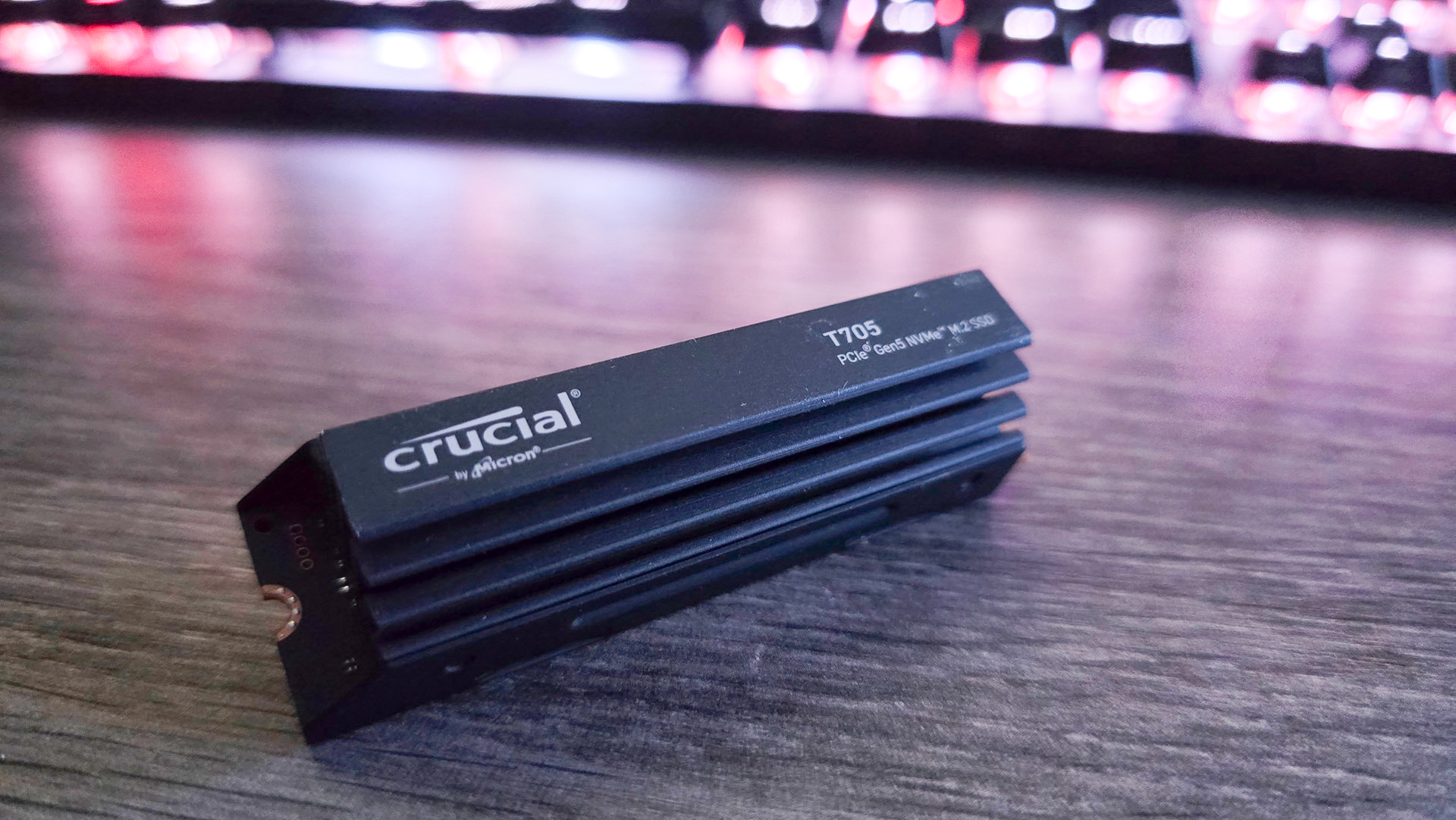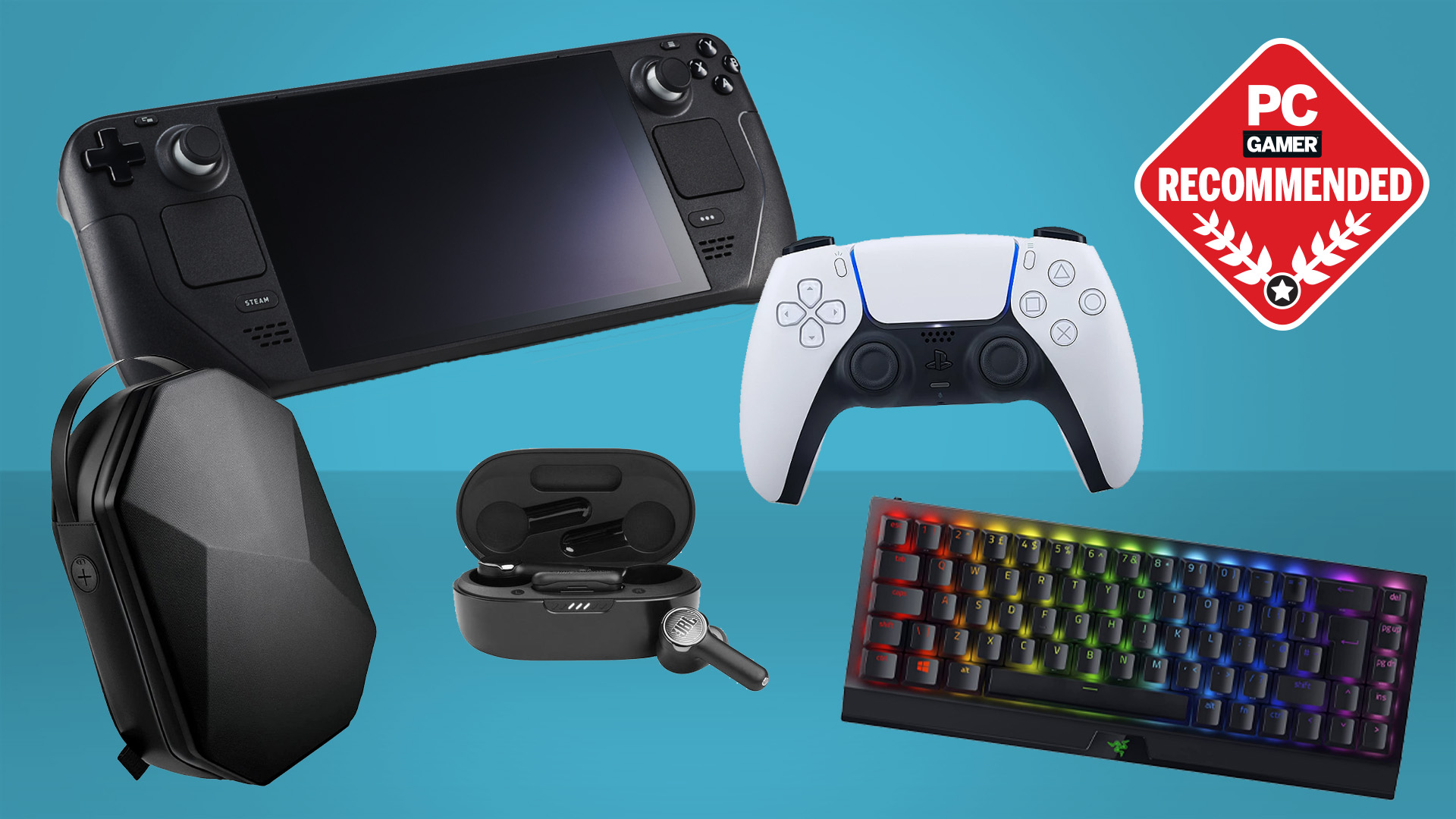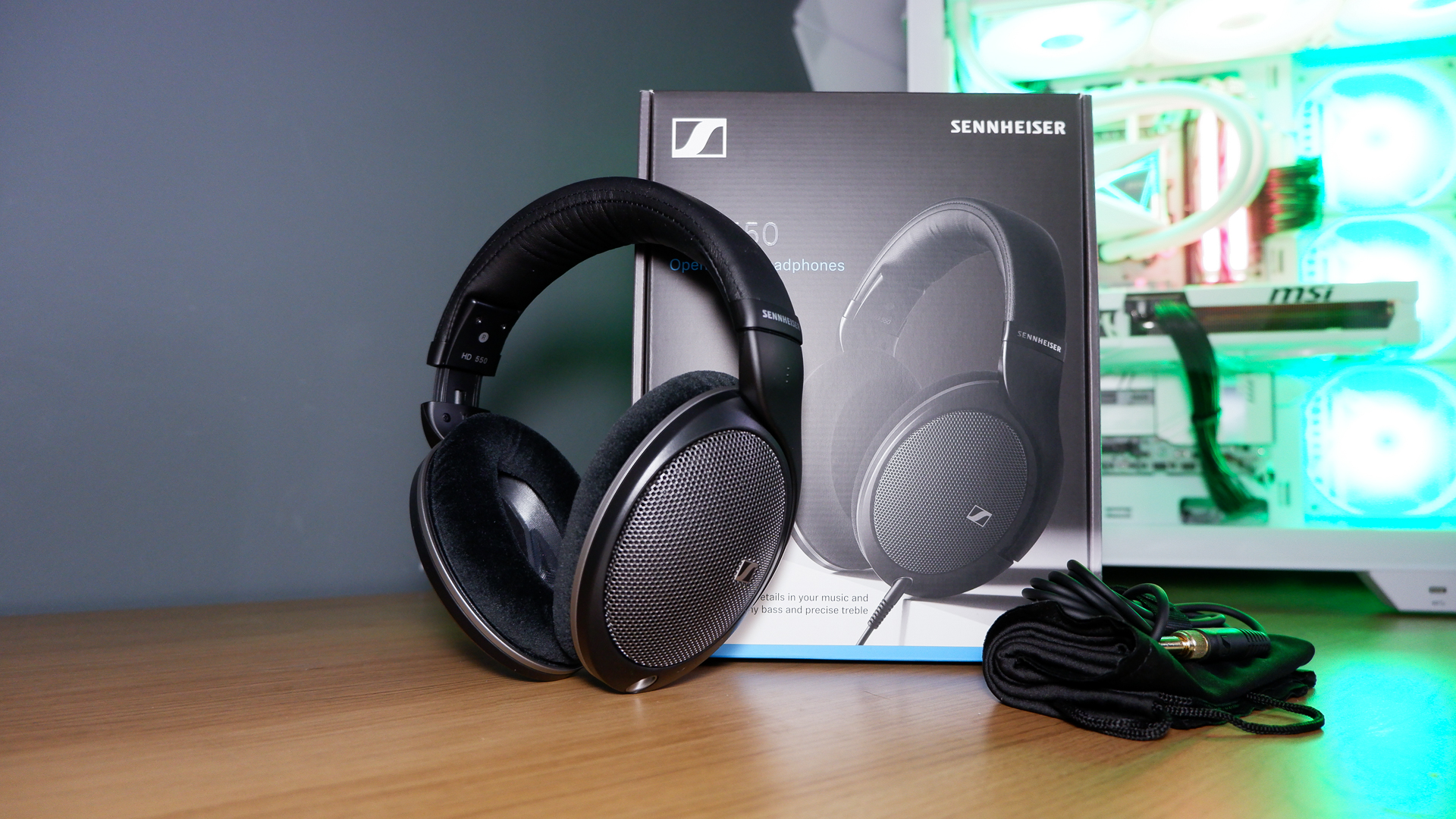Our Verdict
An outstandingly well-rounded high-speed drive, this nippy little SSD delivers some exceptional performance combined with awesome low latency. It's a bit toasty though, and ideally you want to stick it under a motherboard heatsink, and the price increase doesn't quite justify itself over the previous gen drive, the T700.
For
- Top tier random write performance
- Solid sequential scores
- Included passive heatsink does just enough
Against
- Toasty temps on integrated sink
- Non-removable heatsink
- T700 technically better value
PC Gamer's got your back
Ever onward the march of technology goes. Bit of a cliche, that; still, the T705 is a seriously good example of that very notion, us meagre humans pushing hardware to the absolute limit and then some. Launching mid-way through last year, at the time, Crucial announced that the T705 was the world's fastest Gen5 SSD, with blisteringly quick 14.5 GB/s sequential reads and upwards of 12.7 GB/s on the write (for higher capacity models). It was designed (apparently) for gamers and professionals alike that could harness the horrendous amount of bandwidth set forth by the plucky Gen5 drive. It even came with a sexy limited edition white variant, complete with big, chunky, blocky, non-removable heatsink if you wanted (for a premium, of course).
And, on the surface at least, it really did deliver on that promise.
But times have changed since then, and drives similar to this are at last finally popping out of the woodwork a dime a dozen (particularly with the likes of Samsung's 9100 Pro dropping on our doorstep). Still, it got me thinking, does this brute force drive, this masterfully engineered powerhouse, still have the chops to hold its own against some of the latest and greatest? Is it fit to be crowned one of PC Gamer's best SSDs, or has its sequential clout been waylaid by something better, something more potent, or more efficient instead?
Compared to Crucial's own T700, on the surface at least, there's not a huge difference between the two as far as hardware's concerned. The overall spec sheet is very familiar. It still features that Phison E26 eight-channel controller, with DRAM cache (dual-sided), and still comes packing Micron's own 232-layer TLC NAND flash as well (it's worth pointing out at this point that Crucial is a Micron brand). In fact, it's the same hardware that was utilized across the board for that first batch of PCIe 5.0 drives that launched way back in 2023 with Phison's reference design, including Corsair's MP700, Seagate's FireCuda 540, and Gigabyte's Aorus Gen5 10000. What's different here is the bus speed and, of course, the price.
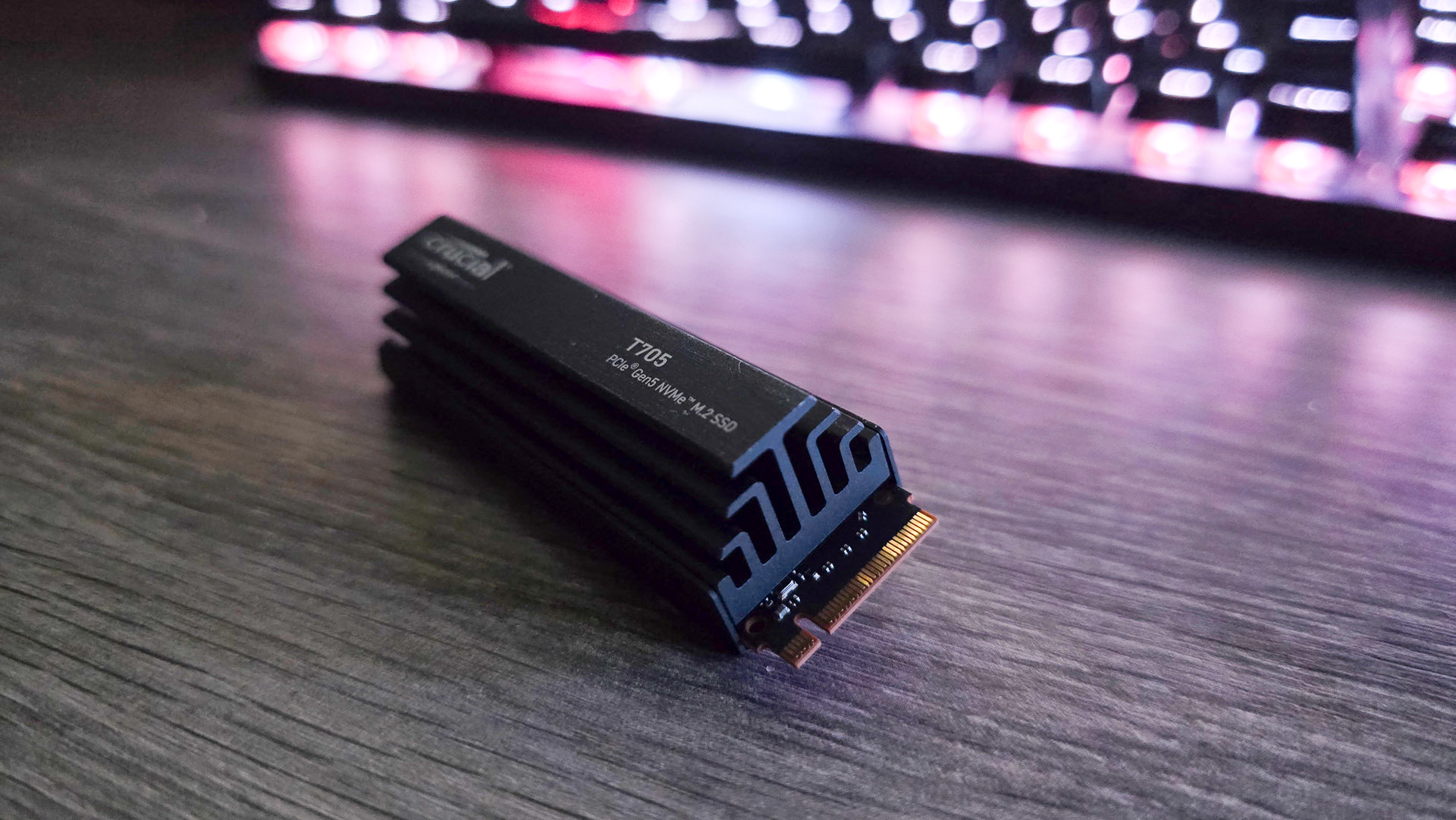
Capacity: 1 TB
Interface: PCIe 5.0 x4
Memory controller: Phison E26
Flash memory: Micron 232-Layer TLC NAND
Rated performance: 13,600 MB/s seq. read, 10,200 MB/s seq. write
Endurance: 600 TBW
Warranty: Five years
Price: $153 | £136
That really is the only major change here comparatively as well. The E26 controller is running at a full bus speed of 2,400 MT/s, whereas the Crucial T700 lapped up at 2,000 MT/s and the earlier Corsair, Gigabyte, and reference offerings were only operating at 1,600 MT/s. To be clear, that's one hell of a feat to achieve with the E26, and you can tell as, even with a chunky built-in heatsink, my 1 TB sample I have on review tops out at temperatures only slightly lower than its 2 TB T700 sibling.
As for capacities, it's the usual affair, with 1 TB, 2 TB, and 4 TB options available, respectively, in both heatsinked and non-heatsinked variants. If you're after those highest-rated 14 GB/s speeds, you're going to want to grab the 2 TB solutions and above; any lower than that, and the single NAND package is going to hold you back, being the bottleneck there, although the random 4K numbers are still pretty stellar, even with the singular package, making it a pretty solid pick for gamers.
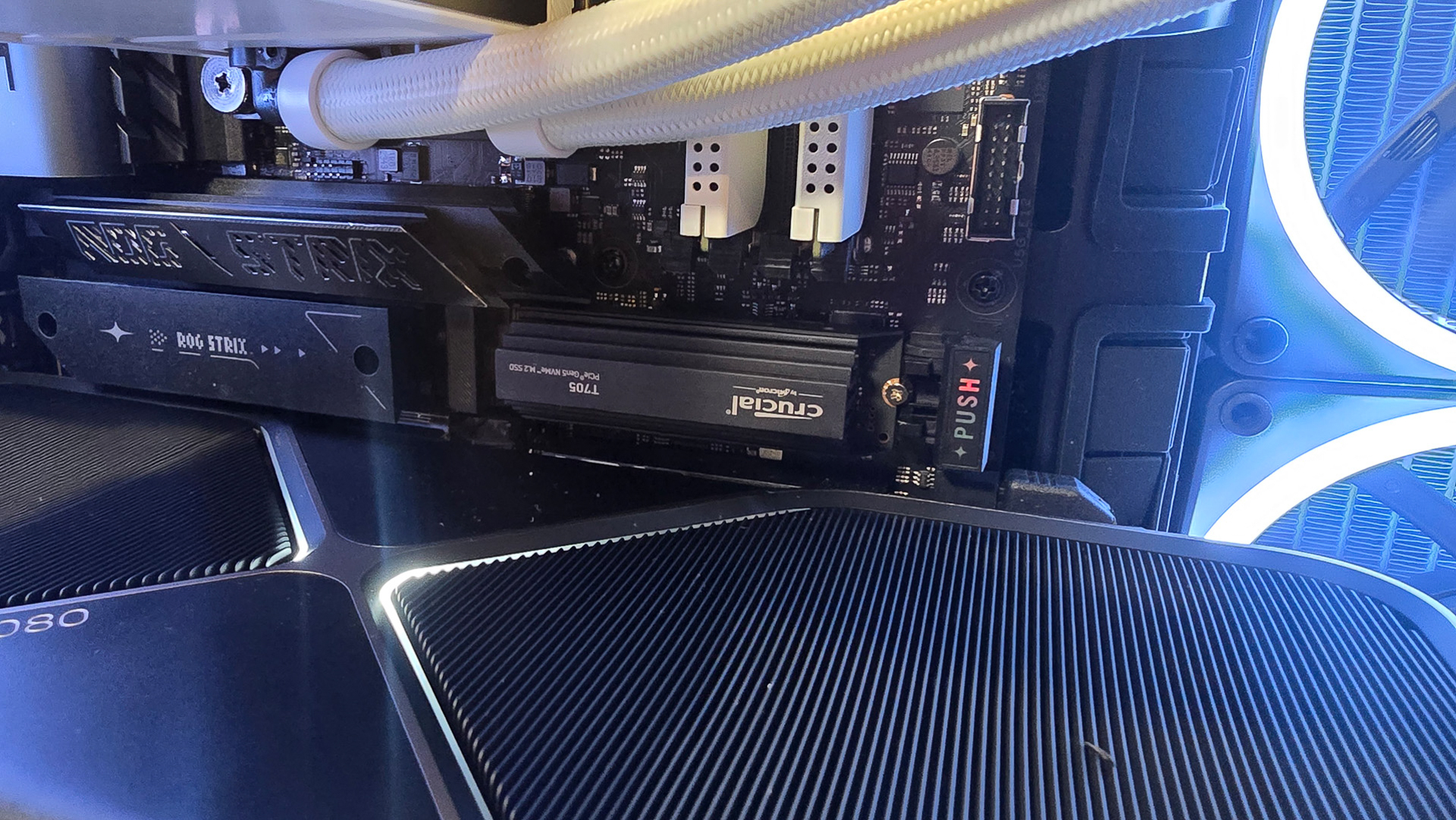
A word on the heatsink. Typically, I'd recommend you get whichever drive is cheapest or on offer, depending on what's available; however, in the case of the T705, its heatsink is designed to be nonremovable. You can remove it, but we're talking about the application of screwdrivers, pliers, and bending the heatsink off it entirely, with some seriously high risk of damaging the SSD underneath. Given it's double-sided as well, it might not play ball with any thermal pads situated under a motherboard heatsink too. In short, if your board's got a solid M.2 heatsink, grab the non-heatsink variant instead.
So then, numbers.
Generally, very good, exceptional in some cases. Latency is ridiculously low in 3DMark's storage benchmark, scoring a staggering 39 ns. At a guess, this is down to that single NAND package, which, although it may be detrimental when it comes to maxing out sequential speeds, actually reduces latency significantly, in turn bumping up random access times in certain applications. That's something that you can equally see in CrystalDiskMark's Random 4K test too, with its write figure delivering an impressive 329 MB/s, beaten out only by Corsair's MP700 Elite and absolutely wiping the floor with Samsung's latest 9100 Pro, which scored a shockingly low 243.
PC Gamer test bench
CPU: AMD Ryzen 9 9900X | RAM: 64 GB (2x32GB) Team Group T-Create Expert DDR5 @ 6000 C34 | GPU: Nvidia GeForce RTX 4080 Super | Motherboard: Asus ROG Strix X870E-E Gaming WiFi | CPU Cooler: Asus ROG Ryujin III 360 ARGB Extreme | PSU: 1200W NZXT C1200 (2024) 80+ Gold | Chassis: Geometric Future Model 5
✅ You want a super-fast OS SSD: Low latency and high random 4K performance deliver some epic real-world performance if you can stomach the additional cost.
❌ You're looking for a value purchase: Will you notice the difference versus the T700 or the MP700 Elite? Probably not. Although it's an impressive engineering solution, it's a hard price bump to justify.
Sequential performance is lower, of course, as a result; reads clocked in at 13,511 MB/s and 10,028 MB/s on the write, but that will really only affect those working with large sequential file patterns, rather than with gamers. If you're a professional art worker or similar, the 1 TB variant at the very least isn't quite as compelling.
As for temperatures, the T705 came in at 84°C at peak, utilizing that built-in heatsink. That is quite high, and although it's manageable, it does just show how far we've come in terms of controller tech. Corsair's Phison E321T, for instance, is wildly impressive by comparison, and, although yes, sequential performance is about 3 GB/s lower across the board, it's almost 30 degrees cooler.
Crucial's T705, back last year, was no doubt the king of the hill. It delivered outstanding sequential performance and insanely aggressive random 4K performance as well, certainly for the time.
But the big issue, even today, is the price. In its 1 TB configuration, you're talking about an upfront cost (at time of writing) of $153, or £136. That's about $0.15 per GB or £0.14. Corsair's MP700 Elite, by contrast, sidles up to that with a $0.09 and £0.10 per GB figure; even Crucial's own T700 manages $0.12 and £0.09 as well. That's a problem, because both of those drives so closely match the T705 on those real-world metrics.
Yes, theoretically the T705 is the quicker drive, and it's even better rounded than Samsung's latest 9100 Pro, which suffered from poor write performance, but, unless you can benefit from those extra 1-3 GB/s on the sequentials, it's a real struggle to justify the expense.
Awesome engineering feat? Absolutely. Actually worth it for gaming? Still no.
An outstandingly well-rounded high-speed drive, this nippy little SSD delivers some exceptional performance combined with awesome low latency. It's a bit toasty though, and ideally you want to stick it under a motherboard heatsink, and the price increase doesn't quite justify itself over the previous gen drive, the T700.
After graduating from the University of Derby in 2014, Zak joined the PC Format and Maximum PC team as its resident staff writer. Specializing in PC building, and all forms of hardware and componentry, he soon worked his way up to editor-in-chief, leading the publication through the covid dark times. Since then, he’s dabbled in PR, working for Corsair for a while as its UK PR specialist, before returning to the fold as a tech journalist once again.
He now operates as a freelance tech editor, writing for all manner of publications, including PC Gamer, Maximum PC, Techradar, Gamesradar, PCGamesN, and Trusted Reviews as well. If there’s something happening in the tech industry it’s highly likely Zak has a strong opinion on it.
You must confirm your public display name before commenting
Please logout and then login again, you will then be prompted to enter your display name.
